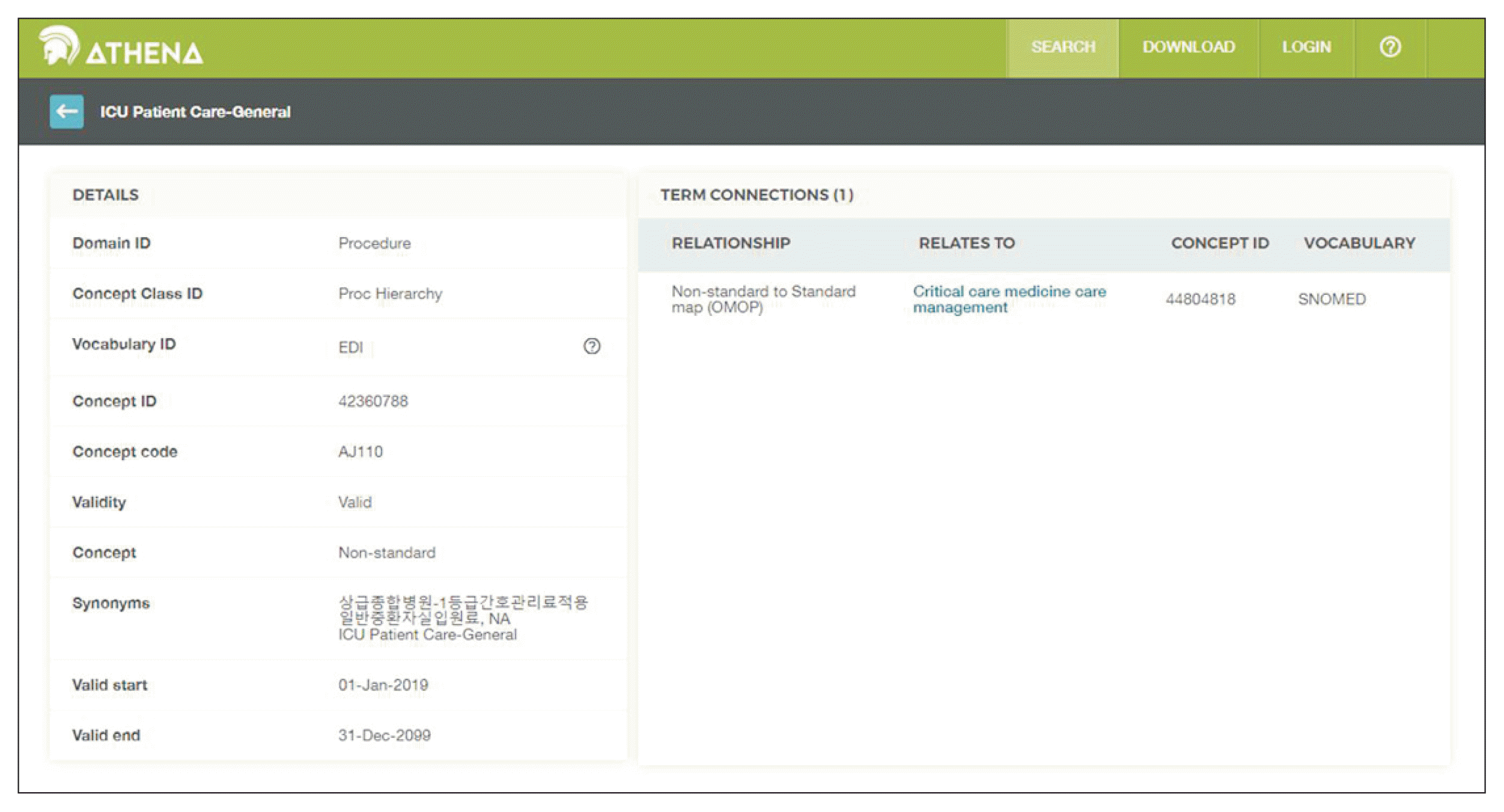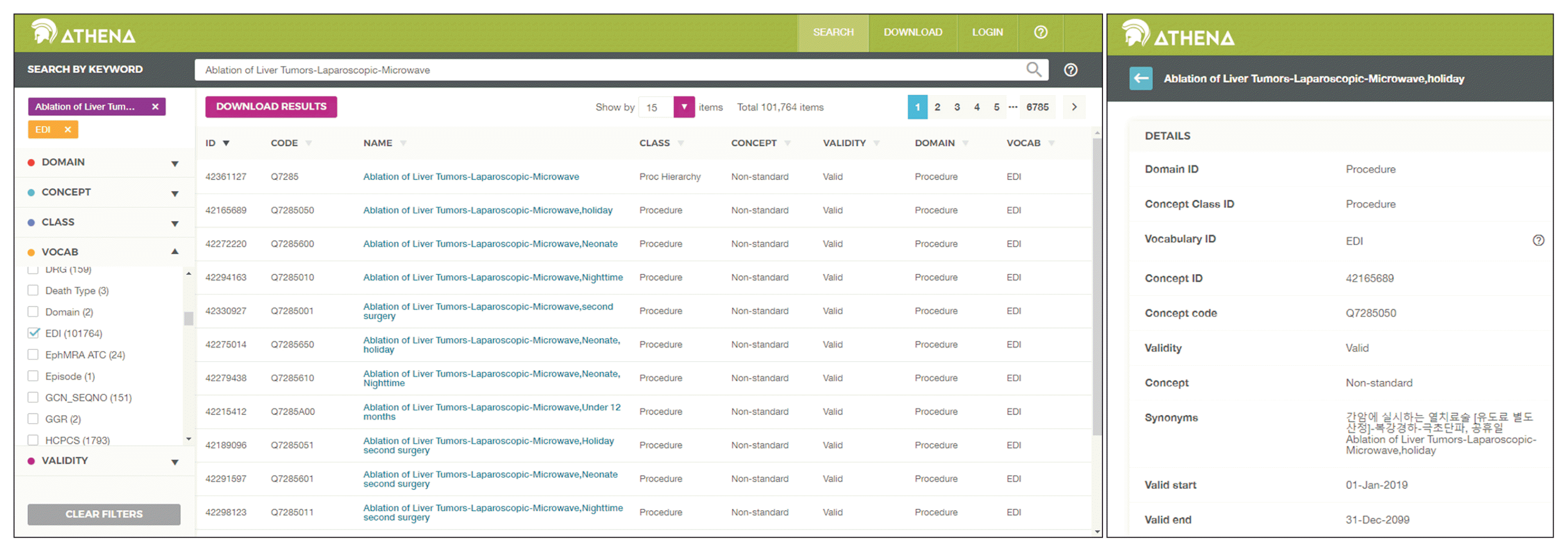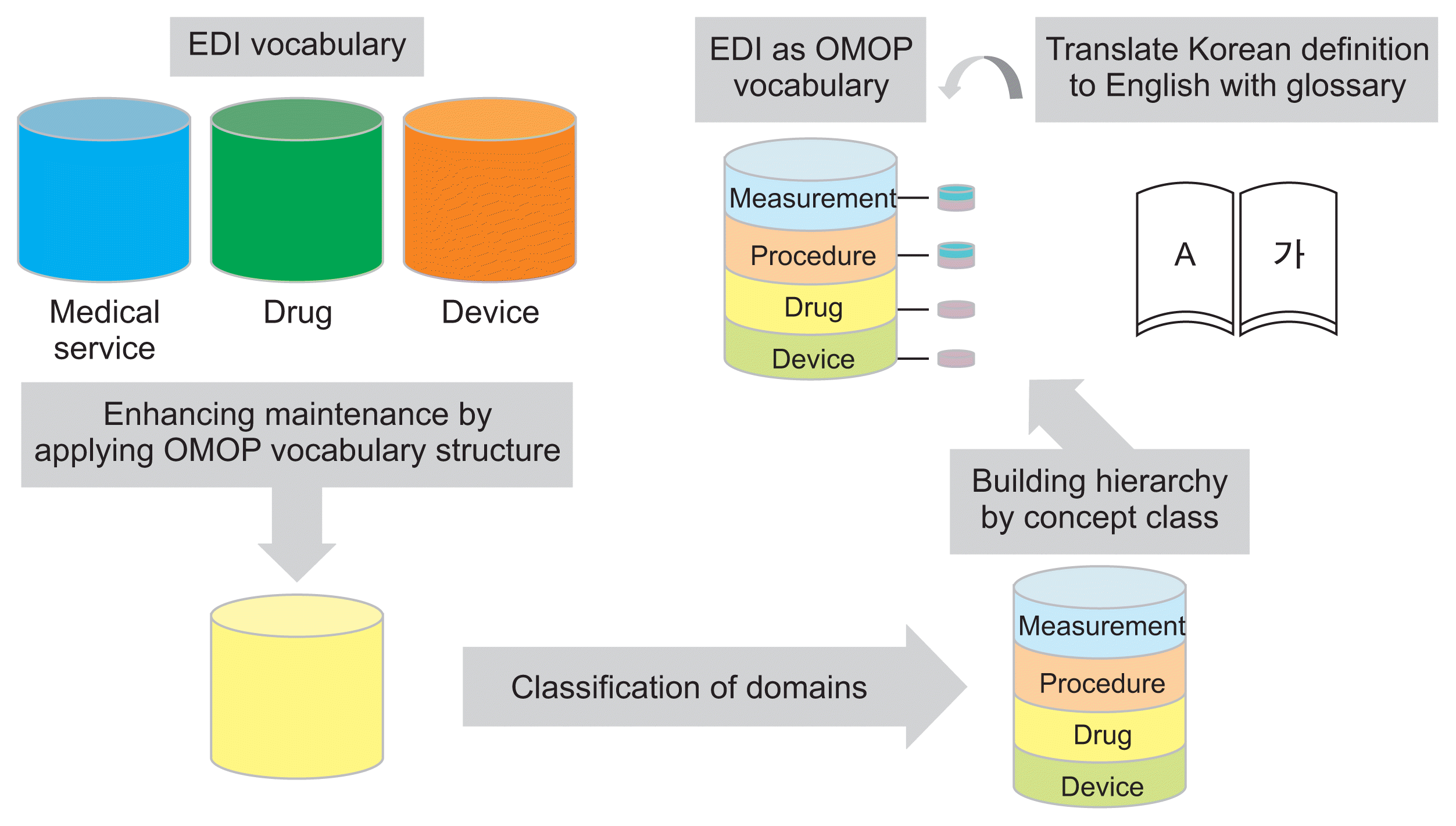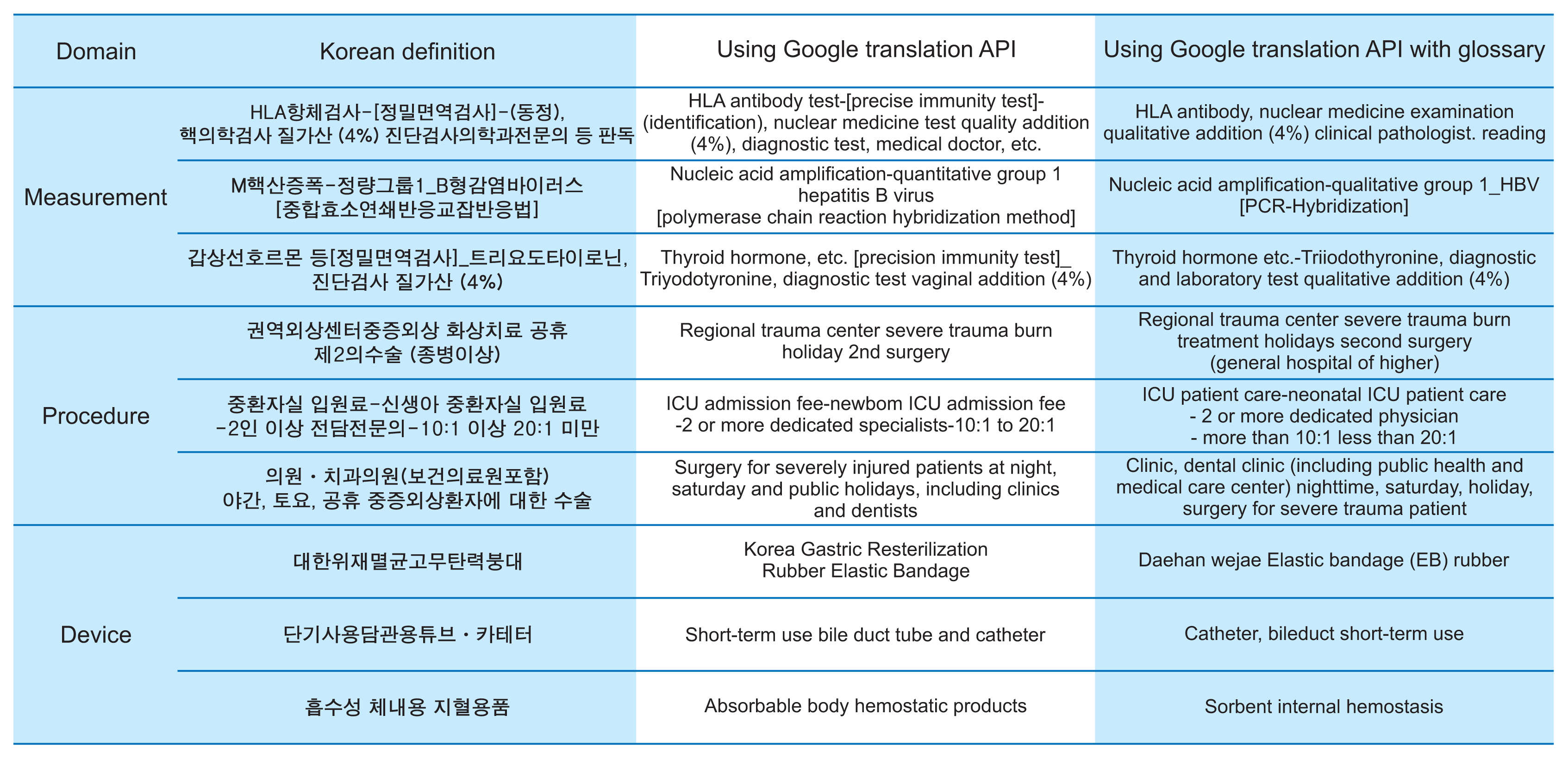1. Park HA, Kim HY, Min YH. Use of clinical terminology for semantic interoperability of electronic health records. J Korean Am Med Assoc. 2012; 55(8):720–8.

3. Kim M. A study on a comparison of diagnostic domain between SNOMED CT and Korea standard terminology of medicine. Int J Database Theory Appl. 2015; 9(11):49–60.

5. Hwang EJ, Park HA, Sohn SK, Lee HB, Choi HK, Ha S, et al. Mapping Korean EDI medical procedure code to SNOMED CT. Stud Health Technol Inform. 2019; 264:178–82.
6. Hripcsak G, Duke JD, Shah NH, Reich CG, Huser V, Schuemie MJ, et al. Observational Health Data Sciences and Informatics (OHDSI): opportunities for observational researchers. Stud Health Technol Inform. 2015; 216:574–8.
9. EdiToOmop: the package to convert Korean EDI code to the OMOP vocabulary [Internet]. San Francisco (CA): GitHub Inc;2020. [cited at 2021 Jan 26]. Available from:
https://github.com/OHDSI/EdiToOmop.
10. Chute CG, Cohn SP, Campbell JR. A framework for comprehensive health terminology systems in the United States: development guidelines, criteria for selection, and public policy implications. ANSI Healthcare Informatics Standards Board Vocabulary Working Group and the Computer-Based Patient Records Institute Working Group on Codes and Structures. J Am Med Inform Assoc. 1998; 5(6):503–10.


12. Lee KC. A study on enhancing terminology & its major issues [dissertation]. Seoul, Korea: Yonsei University;2012.
13. ATHENA. OHDSI vocabularies repository [Internet]. Bethesda (MD): Observational Health Data Sciences and Informatics;2018. [cited at 2021 Jan 26]. Available from:
http://athena.ohdsi.org.
14. Han SH, Lee MH, Kim SG, Jeong JY, Lee BN, Choi MS, et al. Implementation of medical information exchange system based on EHR standard. Health Inform Res. 2010; 16(4):281–9.

15. Kim TG, Kwon O, Shin YS, Sung JH, Koh JS, Kim BT. Endovascular treatments performed collaboratively by the Society of Korean Endovascular Neurosurgeons members: a nationwide multicenter survey. J Korean Neurosurg Soc. 2019; 62(5):502–18.


16. You SC, An MH, Yoon D, Ban GY, Yang PS, Yu HT, et al. Rate control and clinical outcomes in patients with atrial fibrillation and obstructive lung disease. Heart Rhythm. 2018; 15(12):1825–32.


17. Burn E, You SC, Sena AG, Kostka K, Abedtash H, Abrahao MT, et al. Deep phenotyping of 34,128 patients hospitalised with COVID-19 and a comparison with 81,596 influenza patients in America, Europe and Asia: an international network study. medRxiv. 2020. [Epub].
https://doi.org/10.1101/2020.04.22.20074336.







 PDF
PDF Citation
Citation Print
Print





 XML Download
XML Download